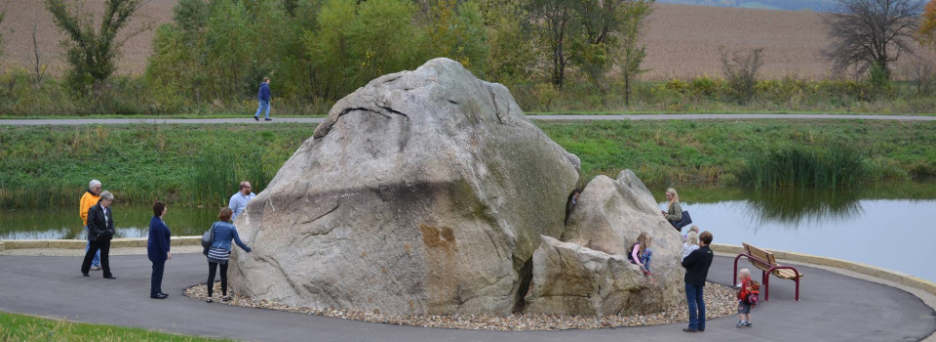
Iowa is filled with beautiful stones, artifacts, fossils, and gems. Given the drought-like conditions that have lowered water levels at lakes, rivers, and creeks across the state, this year is particularly exciting for rock hunting. Read on for a list of common rocks to find and spots to check out if you are looking for the best locations to rock hunt across the state of Iowa.
Do keep in mind that if you’re out hunting in state parks, you aren’t allowed to take anything with you. And if your hunt takes you onto private property at any point, you need to stop and ask permission of the landowner before proceeding. Other than those boundaries, your hunt for Iowa rocks is on!
Geodes
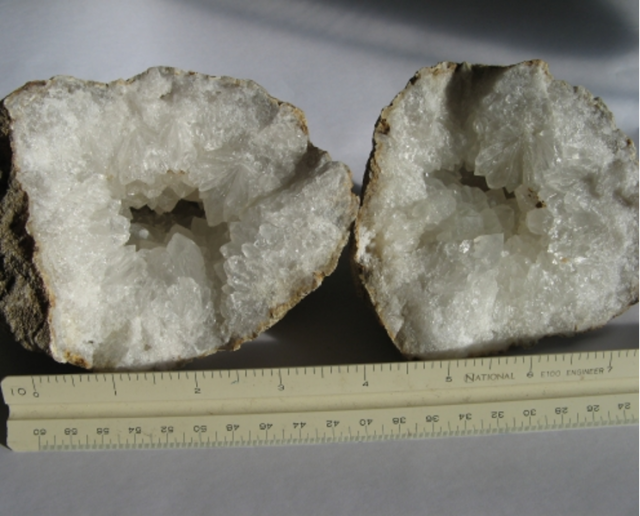
Don’t pass up an opportunity to hunt for Iowa’s state rock, the geode. Geodes can be found specifically in a 35- to 70-mile radius of Keokuk in southeast Iowa where the Des Moines and Mississippi Rivers meet—particularly in Lee, Henry, and Van Buren counties.
These unassuming rocks are always a pleasant surprise due to their crystal-filled insides. People come from all over the world to try to find one to add to their collection. They are usually spherical on the outside—some people say they look a bit like cauliflower—and are about 2 to 6 inches in diameter, though they can be larger. When cracked open, they reveal artful crystal formations sometimes of varying colors including amethyst and chalcedony. Interestingly, hollow geodes are the most prized among avid collectors.
You can stop in the Keokuk Area Convention and Tourism Bureau and they can help you locate a private landowner who welcomes collectors. You might also plan to visit Geode Family Fest, scheduled for Sept. 22-24, where experts can lead you on geode hunts to locations not normally hunted throughout the year.
Glacial Erratics
Across the state you can also spot large, round glacial erratics. Brought to the area thanks to glacial melt many years ago, these large rocks really stand out across the rolling Iowa landscape.
There are a few notable larger glacial erratics across the state to check out. The largest and most impressive is Waldo’s Rock in Marion. Another can be found along the creek bed in Cedar Rapids’ Bever Park. Grammer Grove Wildlife Area in Marshall County is home to one as well as Boulder City Park in Nora Springs. The Stoneman in Fayette is an erratic that looks surprisingly like a man standing on a hilltop.
Too big to haul home, these rocks are impressive to see in person.
Agates
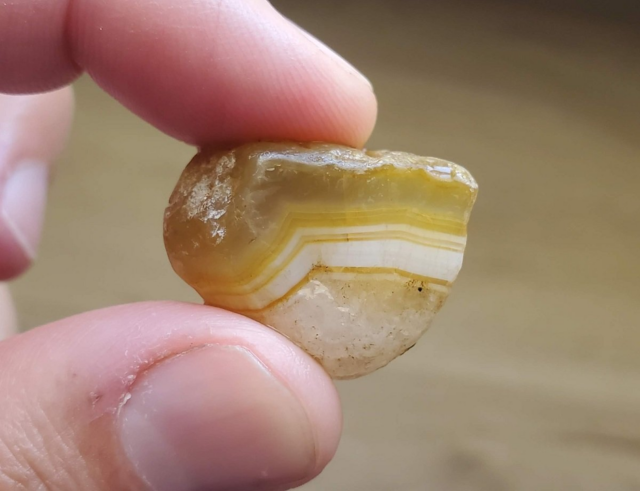
Agates can also commonly be found in Iowa. Lake Superior agates are common and exist in Iowa thanks to more recent glacial activity, which means that pretty much any gravel bed, streambed, or rocky outcrop you see across the state of Iowa is worth picking through.
Dubuque, Bellevue, Burlington, Muscatine, and other towns along the Mississippi River are great agate hunting spots as well. Orient, just to the southwest of Des Moines in Adair County, is another sweet spot for searching for agates and quartz.
Typically in Iowa you’ll see banded agates with not a lot of color variation, but they are common so it’s likely that if you go out hunting you’ll come home with one to add to your collection.
Fossils
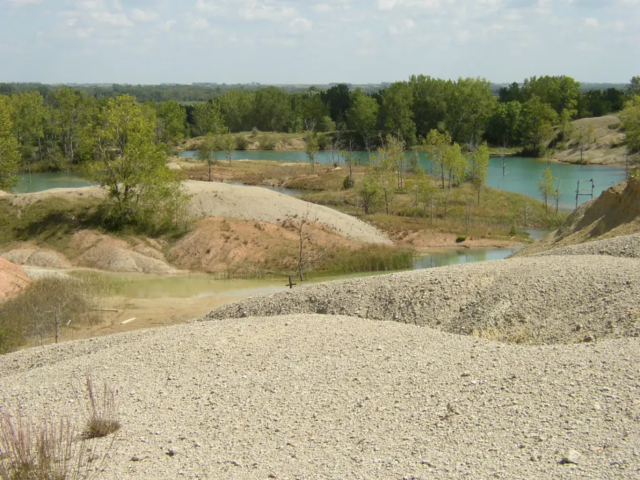
Fossils–especially of coral specimens–abound in Iowa as well. We may be a landlocked state these days, but historically this land sat under a vast inland sea.
One great spot to hunt is Fossil and Prairie Park just outside of Rockford in Floyd County. Free collecting is encouraged here (open daily from sunup to sundown) and there’s a visitor center to pop into for its interesting displays if you happen to be there in the afternoon (1-4 p.m.).
You can also see plenty of fossils while wandering around the Devonian Fossil Gorge in Coralville, but keep in mind that collecting is not permitted in this location. It’s worth wandering around just to see the fossils from 200 million years, back before the dinosaurs. You may also find some limestone quarries around the state that will allow you to hunt for interesting finds on the unused portions of their sites.
Other Sites of Note
No matter what type of rock you are looking to add to your collection, some of the best hunting advice might be the most unexpected.
Anyone who hunts for rocks in Iowa will tell you that, beyond the spots mentioned above, simply looking in gravel parking lots, along the roadside, or in fields in the spring (with permission of land owners, of course) can lead to the most interesting finds. Also remember that if you are searching along a creek bed, along a river or stream, or by the lakeside that the changes in water level and speed from season to season will shift with time, changing the spots where interesting rocks may be found.
Rockhounds might also take note of a couple other interesting rock-related sites in Iowa. The Manson Crater, otherwise known as the Manson Impact Structure, is located in north-central Iowa in Manson. Some 74 million years ago, a mountain-sized meteorite traveling at some 45,000 miles per hour embedded itself in the Earth at this spot. While there’s nothing to see today, thanks to the more recent—and we use that word loosely in this context—glacial till coverage, it’s a geological interest point for sure.
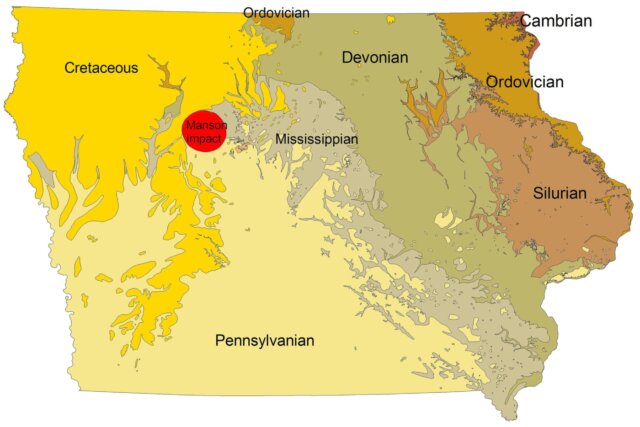
Also, in West Bend, rockhounds may enjoy a stop at the Grotto of the Redemption. This man-made religious monument features nine grottos depicting the life of Jesus created from an astounding collection of rocks, minerals, gemstones and fossils gathered from around the world.
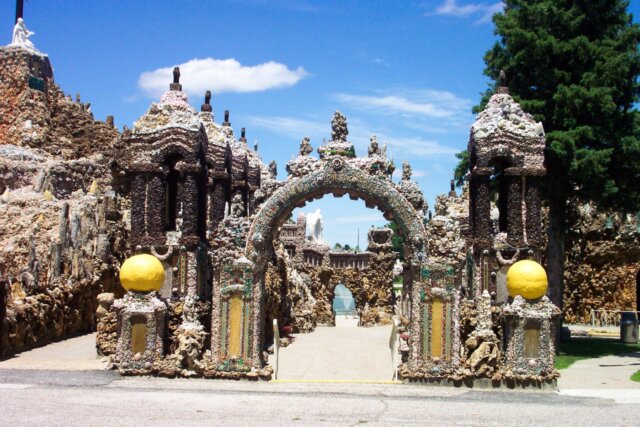
It can also be worth your while to join a local rockhounding group online; visit a museum such as the University of Iowa Natural History Museum, which showcases interesting geological artifacts (some dating back 500 million years); or check out one of the many gem and rock shows hosted across the state.
The Des Moines Lapidary Society Gem, Jewelry, Mineral & Fossil show is scheduled for Oct. 21-22 at the Iowa State Fairgrounds. The Cedar Valley Rocks & Minerals Society will host their two-day auction at the Amana RV Park on Sept. 9-10. The Cedar Valley Rocks & Minerals Society puts together their Rock, Mineral and Fossil Show on the fourth weekend in March each year, and also puts on a “Take a Kid Outdoors” program each summer. Kids can visit Klein Quarry in Iowa City to check out all the rocks and fossils that can be found on that site as well.
No matter where or how you come across interesting rocks in the state of Iowa, the thrill of the rock hunt prevails.